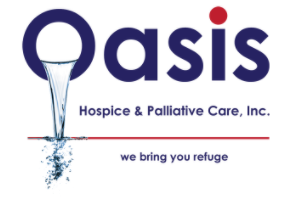Medicare (Hospital Insurance) and these conditions qualify you for hospice treatment. Your hospice doctor and regular doctor (if you have one) certify you’re dying (with a life expectancy of 6 months or less). Does Medicare cover hospice?
 You choose comfort care over cure treatment. You sign a statement choosing hospice care for your terminal disease and accompanying circumstances. Hospice care is frequently delivered at home or at a nursing home. Inpatient hospice also exists. Original Medicare will cover health problems that aren’t related to your terminal sickness, but this is rare. Once you choose hospice, your benefit covers everything.
You choose comfort care over cure treatment. You sign a statement choosing hospice care for your terminal disease and accompanying circumstances. Hospice care is frequently delivered at home or at a nursing home. Inpatient hospice also exists. Original Medicare will cover health problems that aren’t related to your terminal sickness, but this is rare. Once you choose hospice, your benefit covers everything.
Medicare Costs
Outpatient pain and symptom medications have a $5 copayment. If the hospice benefit doesn’t cover your drug. The hospice provider will tell you if any drugs or services aren’t covered.
- Inpatient respite care costs 5% of the Medicare-approved amount.
- In a facility (like a nursing home), you may have to pay for hospice lodging and board.
- Your hospice team will build a care plan based on your terminal disease and concomitant conditions.
- .Healthcare.
- Healthcare services.
- Pain-relieving and symptom-managing medical devices.
- Bandages, catheters, etc.
- Painkillers.
- Help with housework.
- Physiotherapy.
- OT services.
- SLP services.
- Welfare.
- Ernährungsberatung.
Family and Spiritual Counselling
A patient will get medical treatment for pain and symptoms. This care must be in a Medicare-approved hospice, hospital, or nursing home that contracts with the hospice. Inpatient respite care is care you obtain in a Medicare-approved facility (such as an inpatient facility, hospital, or nursing home) so your normal caregiver may rest. Hospice will organize it. Each respite stay is 5 days. Respite care is occasionally available. Your hospice team may offer alternative Medicare-covered services to manage your pain and symptoms. Medicare doesn’t fund hospice treatment in your home or another institution (like a nursing home).
Only your hospice and normal doctor (if you have one) may certify that you have 6 months or less to live. You can continue to get hospice care beyond 6 months if the hospice medical director or doctor certifies (in person) that you’re still terminally ill. Always look best palliative care near me whenever you’re searching.
Once hospice begins, Medicare won’t cover these:
- Terminal sickness and related diseases treatment. Discuss treatment options with your doctor. Hospice patients can always terminate care.
- Prescription medications to heal (rather than for symptom control or pain relief).
- Unauthorized hospice care. Your chosen hospice must provide care. The hospice must provide or organize all end-of-life care. Change hospice providers to obtain the same care. If you’ve chosen your usual doctor or nurse practitioner to supervise your hospice care, you can still see them.
- Medicare doesn’t cover room and board for hospice patients in nursing homes or inpatient hospice facilities. Medicare will fund short-term inpatient or respite care arranged by the hospice team. The respite stay may require a little copayment.
- Outpatient, inpatient, or ambulance care, unless arranged by your hospice team or unrelated to your terminal disease and accompanying disorders.
- Before getting any of these services, contact your hospice staff.
Does Hospice Pay For Nursing Home
Hospice care generally refers to reasonable and necessary services for the comfort and management of a terminal illness. Among these services are:
- Services provided by physicians.
- Nursing assistance.
- Services include physical therapy, occupational therapy, and speech-language pathology.
- Social and medical services.
- Hospice aide services are available.
- Homemaker services are available.
- Medical supplies, such as drugs, biologicals, and medical equipment.
- Counselling includes dietary counselling, terminally ill patient care, and bereavement counselling.
- Inpatient short-term care for respite, pain control, and symptom management.
Hospice Care Levels
Medicare generally pays hospice agencies a daily rate for each day a beneficiary is enrolled in the hospice benefit. This daily payment is made regardless of how many services are provided on any given day, including days when no services are provided. The daily payment rates are intended to cover the costs incurred by hospices in providing services identified in patients’ care plans. Payments are made following a fee schedule that includes four base payment amounts for the four types of care.
Routine home care: 93% of hospice care is provided at the routine home care level. A person’s residence is where routine home care is provided. This could be a nursing home, skilled nursing facility, or assisted living facility. It refers to the level of care provided when the individual is not in crisis. The hospice plan of care, developed in collaboration with the beneficiary’s attending physician, governs the care provided. It will include but is not limited to scheduled visits from nurses, aides, and social workers, payment for palliative medications related to the terminal illness, and coverage for durable medical equipment like hospital beds and wheelchairs. It also includes access to “on-call” hospice registered nurses 24 hours a day, seven days a week. It does not cover the cost of room and board while a beneficiary is in a skilled nursing facility. Beneficiaries receiving routine home care may be charged a 5% coinsurance for each drug provided, but the coinsurance cannot exceed $5 per medication.
When a person is in a medical crisis, continuous home care is provided where they live. During such times, the hospice team can provide up to 24-hour care. Hospices bill Medicare per hour rather than per day for continuous home care. The beneficiary’s coinsurance responsibility is the same as for routine home care.
Inpatient general care: Provided in an inpatient facility. If care cannot be provided where the patient lives, the patient will be transferred to an inpatient facility until his or her condition stabilizes. This level of care does include room and board coverage. While receiving general inpatient care, the beneficiary is not responsible for coinsurance.
Inpatient respite care is provided in a hospital. Because it is recognized that caring for a dying person can be difficult, this level of care is available to provide a break for the caregiver. It is available for a maximum of five consecutive days. This level of care includes room and board. On the other hand, hospices may charge beneficiaries 5% of Medicare’s respite care per diem.
How Long Is Hospice Coverage Available
Hospice care is not limited in time. The beneficiary must be certified as hospice eligible for the first ninety days. When this period expires, the beneficiary must be certified for a second ninety-day period; after that, an unlimited number of sixty-day certification periods are available.
- During the hospice election period, beneficiaries give up their right to regular Medicare benefits for services related to their terminal illness.
- Beneficiaries of hospice may revoke their benefits. They are then immediately eligible for their traditional Medicare benefits.
- The beneficiary may re-elect the hospice benefit after it has been revoked. When the beneficiary is re-elected, the next certification period begins.
- The beneficiary may change his or her designated hospice program once during the certification period without the need for revocation.
Oasis hospice is people’s choice because their hospice care costs are very reasonable. In another post, you can learn more about personal care assistant covering with the woman in the bed? You can contact us at 708-564-4838.

